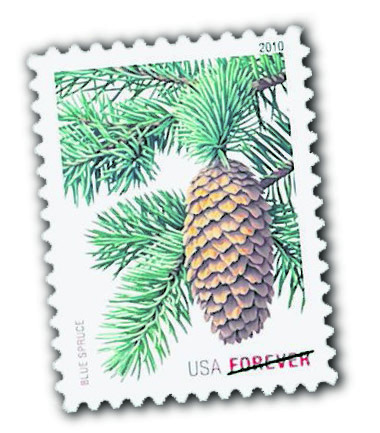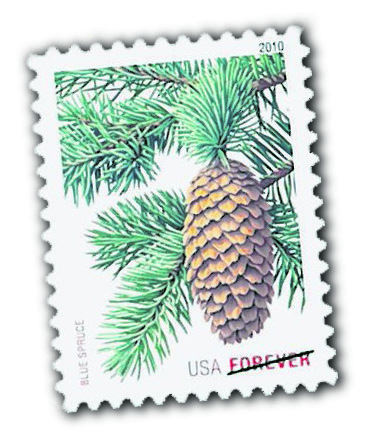WASHINGTON — The price of a first-class postage stamp could jump to 46 cents early next year if a Postal Service proposal goes through, but hundreds of the nation’s largest mailers are banding together to try to block the increase.
The Postal Service announced its proposed rate changes Tuesday, but some mailers — organizing, they say, in an unprecedented effort — argue that the agency should make deeper cost cuts before raising prices on first-class stamps, magazines and packages.
Along with a two-cent stamp increase, the cost for each additional ounce of first-class mail would climb to 18 cents from the current 17 cents. The price to mail a postcard would rise to 30 cents, and magazine publishers would see an 8 percent rate jump, according to the proposal.
Officials anticipate that the changes would generate $2.3 billion in revenue during the first nine months of next year, helping to close a $7 billion budget gap to $4.7 billion. The Postal Service declined to provide the expected impact on mail volume.
First-class stamps have cost 44 cents since May 2009. All “forever” stamps would remain valid, officials said. (Officials on Tuesday also unveiled a new “forever” stamp design of evergreen trees, which will be available in the fall.)
The government-backed Postal Regulatory Commission has 30 days to consider the rate plan. The average price increase proposed Tuesday is 5.4 percent, well above the rate of inflation currently set by regulators at 0.6 percent, according to the Postal Service. law the agency must demonstrate “exceptional or extraordinary circumstances” to regulators to justify a price increase beyond inflation.
U.S. Sen. Susan Collins, R-Maine, was critical of the proposed increase.
“As the principal author of the 2006 postal reform act, I am disappointed that the Postal Service is seeking rate increases that far exceed the rate of inflation,” she said in a prepared statement.
“The Postal Service’s proposal could actually worsen the erosion in its customer base,” Collins said. “Raising the rate for catalogs by more than five percent will cause some businesses to reduce their mailings of catalogs and to direct more of their customers to websites for information about their products. The Postal Service’s plans to hike rates so substantially as well as to cut services may well produce a death spiral of fewer customers and ever declining volume, exactly the wrong direction.”
The Postal Service will face stiff resistance from a new coalition called the Affordable Mail Alliance, formed in the past week to represent hundreds of nonprofits and corporations, including magazine publishers and catalog mailers, such as kitchen retailer Williams Sonoma. The group said it wants the agency to rein in labor and operations costs before raising rates.
Tony Conway, executive director of the Alliance of Nonprofit Mailers and a spokesman for the Affordable Mail Alliance, said the Postal Service’s delivery network “is a system that’s built to handle about 300 billion pieces of mail, and they’ve got about 170 billion, and it’s set to decrease. It’s basically twice as big as it needs to be. It’s that excess capacity and costs that are creating the need in their minds to do this.”
In addition to Williams Sonoma, the alliance includes Conde Nast Publishing, Reader’s Digest, the American Girl doll company, the Envelope Manufacturers Association and the Catalog Mailers Association.
The Postal Service has cut more than 200,000 jobs through attrition and will trim $3.5 billion in costs by Sept. 30, said Maura Robinson, the agency’s vice president for pricing.
“We’re going to continue those cost and operational improvement programs,” she said.
The proposed price increases come as the Postal Service anticipates losing at least $6.5 billion in the fiscal year that ends Sept. 30 and another $7 billion next year. Raising rates is part of a series of reforms introduced to close an anticipated nine-figure budget gap in the next decade.
Send questions/comments to the editors.




Success. Please wait for the page to reload. If the page does not reload within 5 seconds, please refresh the page.
Enter your email and password to access comments.
Hi, to comment on stories you must . This profile is in addition to your subscription and website login.
Already have a commenting profile? .
Invalid username/password.
Please check your email to confirm and complete your registration.
Only subscribers are eligible to post comments. Please subscribe or login first for digital access. Here’s why.
Use the form below to reset your password. When you've submitted your account email, we will send an email with a reset code.